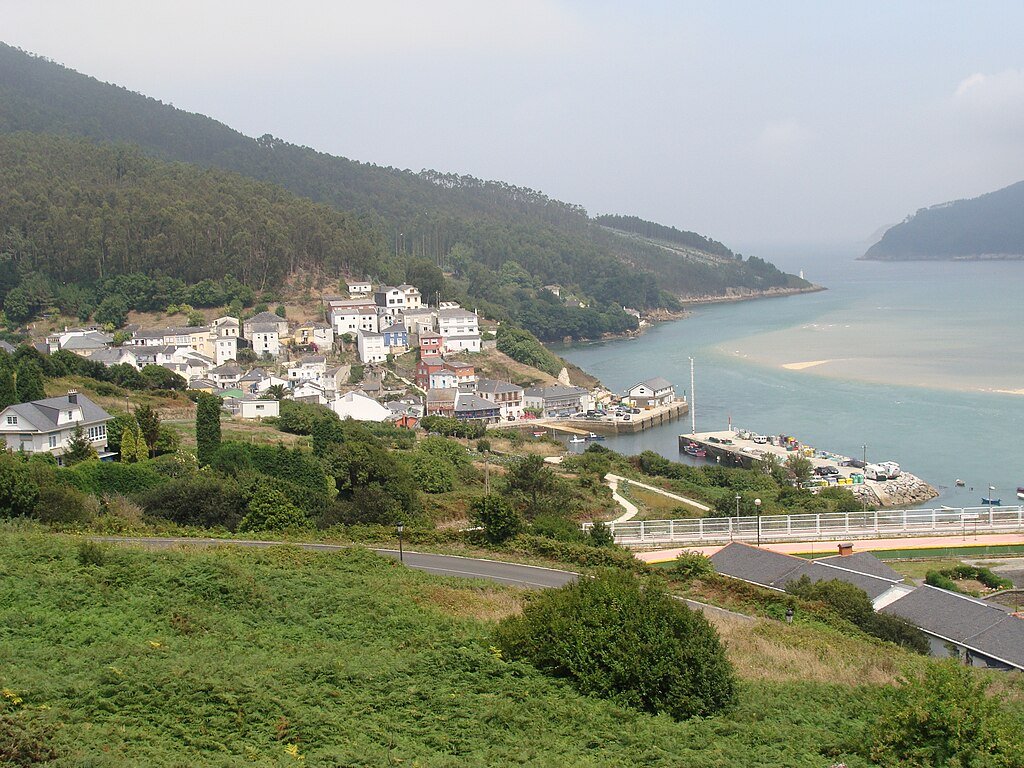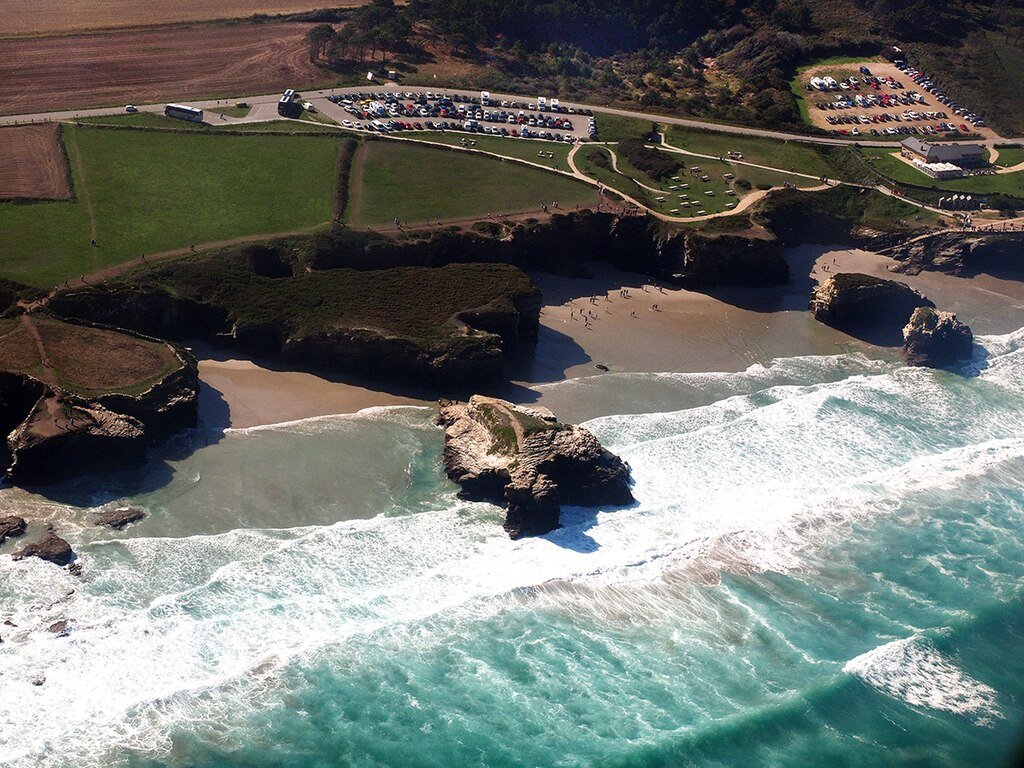A Local’s Guide to Travel in Galicia, Spain
Affiliate disclosure: some of the links in this article are affiliate links. If you book using one of them, we’ll earn a small commission. All of our info is free to read and free of ads, so we appreciate it!
If magic can be felt, nowhere in Spain, perhaps not even in Europe, is it felt like in Galicia. If you already know of this land full of mysticism, you surely know what I'm talking about - and if you've never visited, I don't know what you're waiting for!
Galicia is simply different. Nestled away in the northwest corner of the Iberian Peninsula, separated from the rest of the country by the Ancares and Courel, no place in Spain has such a close relationship with the sea. Galicia is surrounded by over 1,000 kilometers of the wild, dark, always magical Atlantic Ocean. That's the very ocean that makes its seafood and fish considered the best in the world, and the same sea that Gallegos have used to migrate to every corner of the Earth, so much so that a popular saying in Spain claims "there's a Gallego even on the moon."
Next to the sea, the other characteristic that has forever marked Galicia is its Celtic origin. Those mythical roots, that magic, await you in the region’s green forests and mountains. In them, you can get lost, feeling like you're in the middle of nowhere, without towns, without people, without anything else but a presence that you couldn't define if not with that word: magic.
But don’t worry, if what you want is a bit of city life, Galicia has that too. In A Coruña, the home of textile giant Zara and the city that has set the fashion of the 21st century; in the always modern Vigo; or in the most cosmopolitan city in European history: Santiago de Compostela.
In short, Galicia has a bit everything and there’s something here for everyone.
More Spain travel info:
For more info on travel in northern Spain, check out our Northern Spain travel guide and this article on 10 places to visit in Northern Spain.
And if you could use some help planning your itinerary, schedule a Spain travel consultation with one of our Local Experts!
Table of Contents
What is Galicia like? Why should you visit?
Where is Galicia?
How to get here
Transportation and getting around
Best time to visit
How long to spend
Where to stay - best bases
Best places to visit
Things to do
7-day Galicia itinerary


Local help with your planning
Galicia is fascinating region of Spain that offers so many possibilities. Terrific beaches, amazing seafood, good wine, wild natural places, and cosmopolitan cities. The only challenge when planning a trip here is figuring out how to fit everything in with limited time!
If you’re planning a visit to Galicia and Northern Spain and could use some help coming up with a great plan, consider scheduling a Spain travel consultation with one of our Local Experts!
These are one-hour Zoom calls where you’ll get to chat with a Spain-based travel pro about the trip you’re planning and they’ll share their tips and advice, answer your travel questions, and help you perfect your itinerary.
What is Galicia like?
Galicia can be divided into two very distinct areas: on one hand, there is the Atlantic axis, which runs all along the region across its northern and western borders. It’s in this area that our five main cities - Ferrol, A Coruña, Santiago de Compostela, Pontevedra, and Vigo - are located, as well as our most well-known landscapes.
Because when Spaniards speak of Galicia, we think of long beaches, fine sand, and big waves in the Rías Altas. We picture coves, estuaries, paradisiacal islands, and the sun setting beyond the horizon in the Rías Baixas. And above all, of the Albariño white wine and incredibly fresh seafood that comes from those coasts, famous throughout all of Europe. And you’ll find all of that along the coastline.
However, there is also another Galicia, just as interesting as the coastal one, if not more so. It is the Galicia of legends, mountains, and forests hundreds of thousands of years old. This Galicia lies near the eastern border and is found around the cities of Lugo and Ourense, at the foot of the Xurés and Ancares mountains, and the Sil Canyon. Largely uninhabited and mystical, this part of the region (and its red wine) is a delight for the senses and for anyone who seeks undisturbed nature.
If Galicia is famous throughout Spain for anything, it is for the mixture of these two aspects: the power of its sea and the welcoming nature of its mountains, the natural wonder of its beaches, and the magic that emanates from its forests. White wine and red wine. Octopus and Galician beef. Two distinct heritages that come together and blend into modernity in cities like Vigo, A Coruña, and Santiago.
Where is Galicia?
Photo: TUBS, CC BY-SA 3.0, via Wikimedia Commons
Galicia is one of the 17 autonomous communities that make up the Spanish state, and it is located in the extreme northwest of the Iberian Peninsula. Its entire southern border is shared with Portugal, while the regions of Asturias and Castilla y León border it on the east. To the west and north, Galicia’s boundaries are marked by the Atlantic Ocean, with a coastline stretching over 1,000 kilometers.
The region’s capital, Santiago de Compostela, is about 600 kilometers (360 miles) from Madrid and can be reached in 6 hours by car or 3.5 hours via high-speed train.
While Galicia is firmly a part of Spain, it is relatively isolated from the rest of the country, both geographically and culturally. Simply put, Galicia is a corner of a corner of Europe (the Iberian peninsula).
Nestled in its hideaway in the northwest of Spain, it took centuries for the Romans to reach this land, so feared for its magical, dark character. The Arabs never managed to settle permanently here during their conquest of Spain, and so separated is it from the rest of the country, it was essentially forgotten for centuries after the Reconquista.
Isolated by the mountains on its eastern border, Galicia and Gallegos have always leaned towards the Atlantic Ocean, so it’s along the coast that you’ll find the three main cities, which form the backbone of the region: A Coruña, Santiago de Compostela, and Vigo.
Galicia’s geographical isolation has also helped it maintain its own language: Galician, or Gallego as we call it, which is a cousin of Portuguese. In fact, in many respects, Galicia feels closer to Portugal than to the rest of Spain. For example, a journey to the Spanish capital of Madrid can take the same time as to Lisbon, the Portuguese capital, while Porto, in Portugal’s north, is much closer.
Galicia’s geographic location tells you everything you need to know about the region: remote, isolated, different.
How to get here
Arriving by air
The three main cities of Galicia (Vigo, A Coruña, and Santiago de Compostela) each have airports, but only one of them is international: Santiago de Compostela, which offers connections to Italy, Switzerland, the Netherlands, and France.
However, among the three airports, there are many connections with other destinations in Spain, mostly run by low-cost carriers. If you’ll be flying in to the region from elsewhere in Spain, tickets can cost you as little as $50 USD one-way.
All three airports have direct connections with Madrid and Barcelona, Spain’s two major international airports. Additionally, Vigo has connections to many of the main tourist destinations in the country (including the Balearic Islands and Canary Islands), A Coruña has direct flights to Valencia and Malaga, and Santiago serves more than ten destinations throughout Spain.
Arriving by train
Owing to the recent construction of a high-speed rail line connecting Santiago de Compostela with Madrid, the train is now by far the easiest and most comfortable way to travel to Galicia if coming from Spain’s capital.
The connection between Santiago de Compostela and Madrid takes only 3.5 hours, and there are typically 7 departures per day, starting around 8:00 AM and going every 2 hours or so until 7:00 PM. Some of these trains require making a change in Ourense, while others go direct. Tickets cost as little as about 65 euros if booked in advance.
You can see timetables and fares on the RENFE website, Spain’s national rail carrier.
The only real drawback to the train is that due to the way the rail network is organized in Spain, with Madrid at its heart, you will almost certainly have to first travel to Madrid and then connect on to Galicia, no matter where in the country you’re coming from. In other words, to go Galicia by train from Barcelona, Sevilla, or Valencia, for example, you must first pass through Madrid.
Arriving by bus (from elsewhere in northern Spain)
Taking the limitations of the rail networt into account, the best option for traveling to Galicia from nearby destinations in northern Spain - such as San Sebastián, Bilbao, Asturias, León, or Cantabria - is the bus.
Buses are run by ALSA, which operates routes to all the main cities of Galicia. Tickets are not particularly expensive (usually ranging from 40 to 100 euros), there are many different schedules available, and trips can be booked in advance or purchased on the spot at the bus station.
Where to book train and bus tickets
In general, I recommend booking your public transport tickets directly with the service provider. That said, when you have a lot of options or when you’re not familiar with the different companies, it can be a real hassle to look them all up in order to compare routes and prices.
Omio is an aggregator I like that shows options for public transport routes all over the world. When you do a search, you’ll be able to see all your options for trains, buses, flights, and even ferries along with a host of different companies that provide the services. Comparing prices is easy, the site has a great design, and you can keep all your bookings in one place. It costs a little bit more than booking direct, but it’s really convenient.
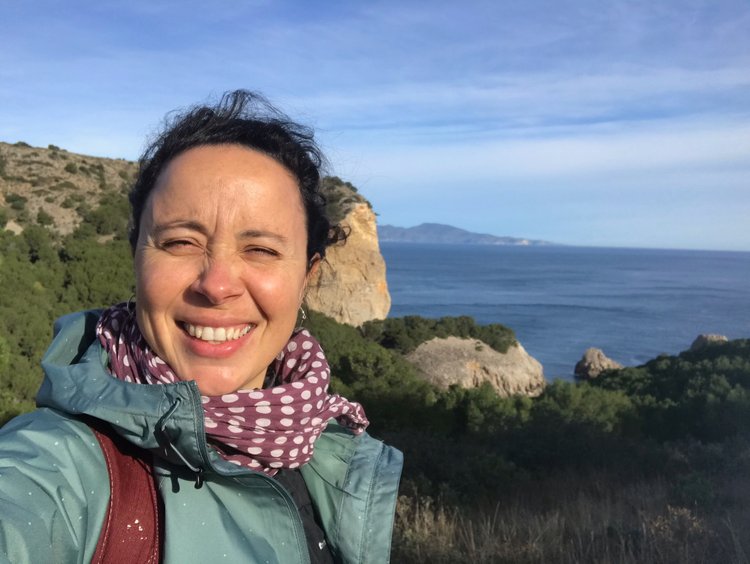
Connect with one of our Spain-based local experts for help perfecting your itinerary, answers to all your travel questions, and fabulous local tips!
Transportation and how to get around
Earlier, I spoke about how there are essentially two Galicias; the one along the Atlantic coast, where most of the cities are, and the one in the mountains, on our eastern border?
Local trains - for the west coast
Well, getting around the cities and towns on the Atlantic coast is super easy: trains run from early morning until late in the evening, for almost 20 hours a day, connecting all of the main cities and most of the towns on Galicia’s western coast. A Coruña, Santiago, Padrón, Vilagarcía, Pontevedra, Vigo, Tui, and Ourense (which is on the way to Madrid) are all on the train line and you can easily travel between any of them.
So, if you mostly intend to visit these cities and nearby areas, you don’t have to worry about renting a car. Train connections are very frequent and tickets are fairly inexpensive, usually ranging from about 7 to 20 euros.
Now, the situation changes significantly if you want to explore the east of Galicia, which is a much more remote, distant, and mountainous area. Here, renting a car is the only option.
Years ago, certain bus companies operated some lines in this area, but they have mostly disappeared today and the few that remain often have no more than one trip today between destinations.
Renting a car - for the interior and the east
If you rent a car while in Galicia, know that the roads are in very good overall condition and driving here is easy, with very little traffic.
You’ll find rental car agencies at the airports, at busy train stations and in the bigger cities (Santiago de Compostela, A Coruña, and Vigo, for example), with a mix of local companies and the big international agencies.
To check prices and book, I recommend using the following two car rental websites:
DiscoverCars includes offerings from all the major international rental companies as well as lots of smaller local agencies, which often have much better pricing. You can often find great deals.
AutoEurope tends to be more expensive, but they only list options from large, well-reviewed companies and their customer service is excellent. Their deals often include “zero deductible” (i.e. full coverage) rental insurance.
Best time to visit
As I’ve mentioned throughout this article, Galicia is famous for many things: the sea, the beaches, the food, the wine, the magic, but all of that aside, there's one other thing that it's recognized for throughout Spain: the rain.
The Galician language has dozens of words to describe every type of rain, and as a famous musical group from Vigo once said, in Galicia "rain is art." While it can rain at any time here, the winter sees by far the most precipitation, so, if you don't want to get soaked, avoid the winter. It’s that, or risk it raining for two weeks straight.
Visiting in Summer
Although each of the other seasons has its pros and cons, my personal recommendation is to come in summer. The summer months in Galicia are pleasantly warm but not overly hot, with temperatures usually ranging between 20 and 25 degrees Celsius, and the chances of rain decrease a lot - although they don't disappear entirely, of course.
Because of this climate, summer is the perfect time to enjoy the 1,000 kilometers of coastline and the countless beaches that Galicia offers. Additionally, the days are incredibly long, and in July it doesn’t get dark until 11 pm!
If there’s a downside to a summer visit, it would be that some areas, like the Rías Baixas and Santiago de Compostela, can get crowded. However, Galicia is not a very popular destination for foreign visitors, so the crowds are rarely overwhelming or unpleasant.
Visiting in (late) Spring
If you’re very concerned about crowds, or just don’t have vacation time in the summer, nothing beats coming to Galicia during the late spring months of May and June. The temperatures are pleasantly warm during this period, and the atmosphere of the region begins to buzz in anticipation of summer, but there is much less tourism.
It will be too cold to swim in the sea, but the beaches are lovely to walk along during these months, the cities are fun to explore, and the mountains, trails, and nature are perfect for outdoor activities.
Visiting in Autumn
Autumn is another very good time to visit Galicia, much like the spring. The foliage, especially in the eastern part of the region, is at its most beautiful during this period, with countless shades of red, orange, yellow, and brown.
The coast empties out a bit, and you can still go swimming, at least in the early part of the season, and the streets of the cities become quieter and more intimate as locals settle back into the rhythms of daily life.
If you're a traveler who enjoys doing your own thing, “andar a su bola”, as they say in Galicia, nothing beats autumn.
Visiting in Winter
And what about winter? Well, as I said above, the winter looks like this: rain, rain, and more rain. The days are also quite short and there’s much less atmosphere and vibrancy in the cities. I doubt that’s what you’re after, but if it is, Galicia awaits you with open arms.
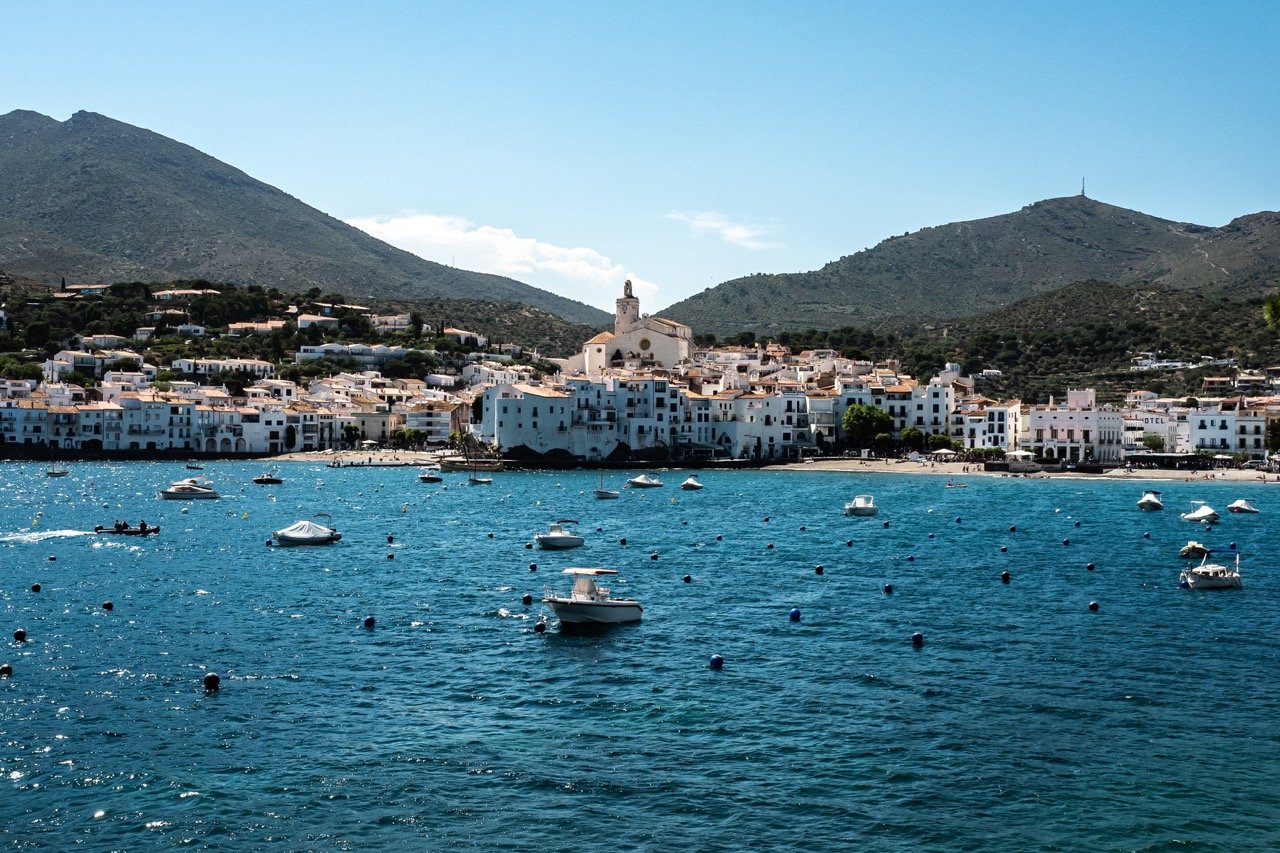
How long to spend
Galicia offers a wide variety of options for different types of trips, from quick city hopping visits to extended stays exploring the coast, islands, and nature of the region. In general, I’d recommend a minimum of 7 days here, so that you have enough time to experience a nice mix of areas and attractions.
If you’re primarily interested in the principal cities here, you can see them in about 3 days (dedicating a day to each). Alternatively, to get lost in nature and see what makes this region so special, you’d need at least a week. And if you plan combine the cities with rural villages and a healthy dose of nature, 10 days to a full 2 weeks is about what you should expect to spend.
5 days - for the big cities and Rías Baixas
I know most people don’t have unlimited time here though, especially if you’ll be visiting Galicia as part of a wider trip throughout Spain. With that in mind, I would say that 5 days is enough time to get a good introduction to Galicia.
The three main cities of the region - A Coruña, Santiago de Compostela, and Vigo, each with its own distinct personality - can be explored in a full day each. Then, dedicate the next two days to visiting one of the most popular natural areas in Galicia: the Rías Baixas.
This is a wonderful area of coves, beaches, and Caribbean-esque islands, top-quality seafood, the best white wine in the Iberian Peninsula, and unforgettable sunsets.
10-14 days - time to add in the Costa da Morte and eastern Galicia
If you have more time, the possibilities really begin to open up. To start, between A Coruña and Santiago lies another coast with very different characteristics from the Rías Baixas: the Costa da Morte.
A coastal stretch of long, rough, endless beaches, this is the territory of surfers and hippies and it's playfully known as “Galifornia” (a combination of Galicia and California).
You can spend a few days bopping around this stretch of coast, and then it’s time to head east: towards the city of Lugo, famous for its culinary culture, and then on to Ourense, surrounded by natural wonders like the Sil Canyon and the Xurés Mountains.
Where to stay - best bases
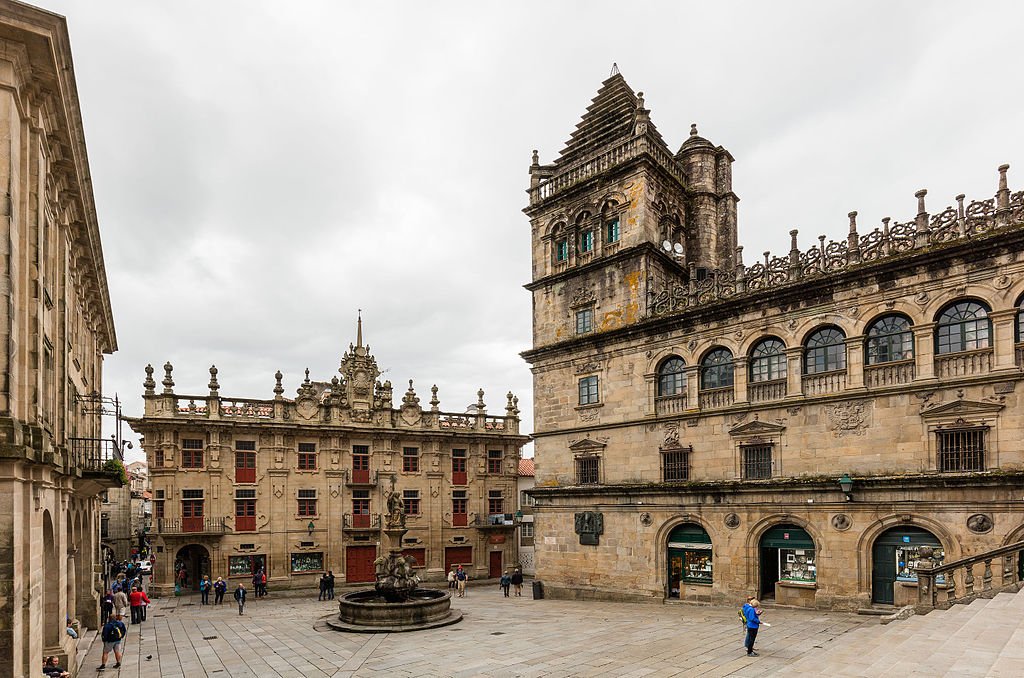
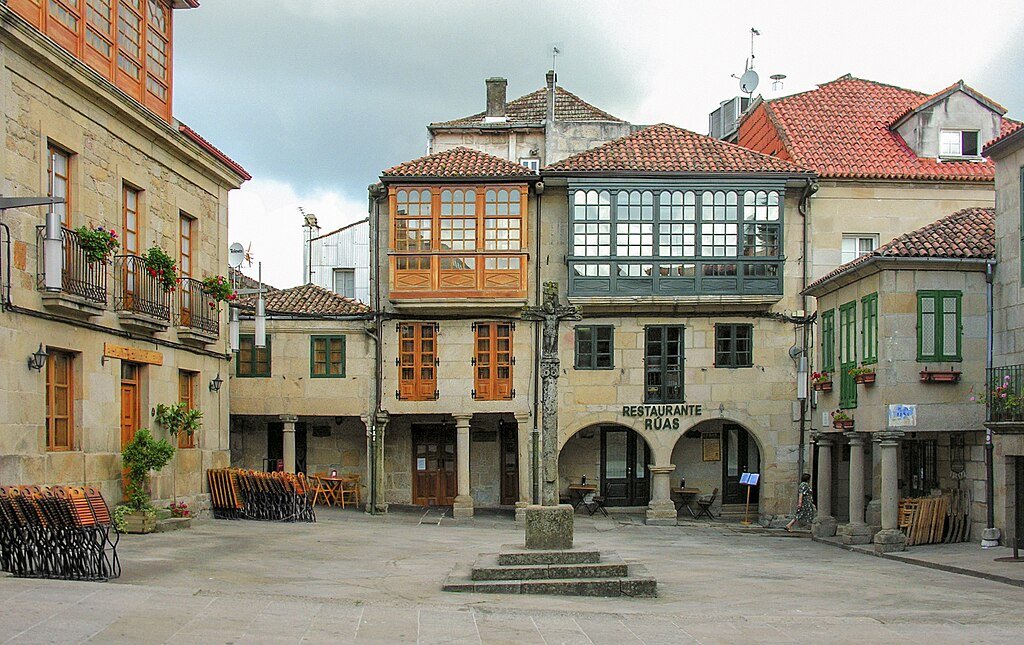

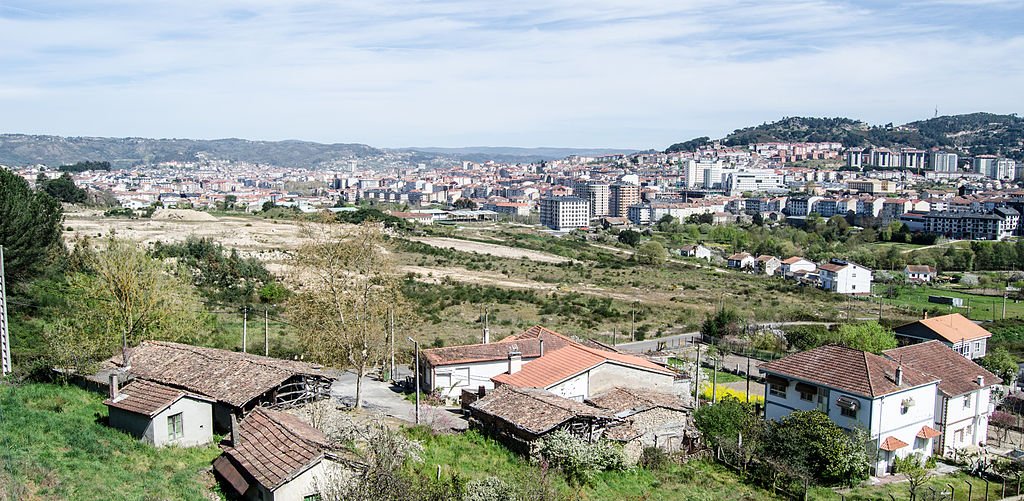

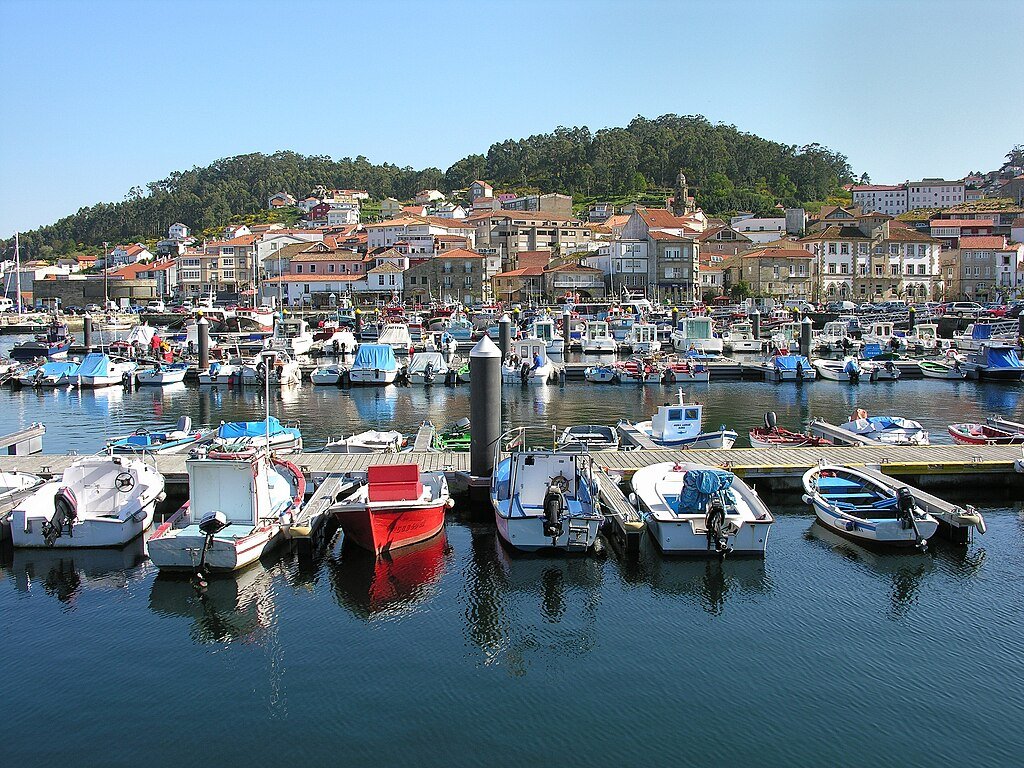
Santiago de Compostela
Santiago de Compostela, the capital of Galicia, is the best possible base if you you’ll be here for just a short trip. The city has the only international airport, is well connected with the rest of the region’s cities, and is just a short drive to the main attractions of the west coast.
However, Santiago does have one problem: during the summer, there is a massive influx of pilgrims who arrive in the city while walking the Camino de Santiago.
Santiago is no stranger to tourism, and the visitors here are nothing new: the Camino de Santiago originated thousands of years ago and has been an important pilgrimage route since then for people to visit the tomb of the Apostle Santiago, which is said to lie under the Cathedral of Santiago de Compostela.
However, the route has overflowed in recent years, and the summertime crowds have become pretty unmanageable: in 1986 there were 1,801 pilgrims who visited Compostela, but in 2023 that number skyrocketed to 446,035. So, this is a great base at any other time of year, but I don’t recommend an extended stay in the summer.
Pontevedra and A Coruña
If you prefer to get away from the overcrowding experienced in Santiago de Compostela (only during the summer months), the two most popular options are usually Pontevedra and A Coruña.
Both are pleasant cities with a lively atmosphere, and they are largely free of mass tourism. Pontevedra is located near the coast, while A Coruña sits right on the sea and is a truly maritime city (you can feel it in the air).
Which city is a better base will depend on the area of the Galician coast that you want to explore: Pontevedra is the gateway to the beaches of the Rías Baixas, famous for their tranquility and the quality of their wine. Meanwhile, A Coruña is close to the Costa da Morte, characterized by immense beaches, big waves, and wild terrain.
Ourense
If you’re interested in exploring the far eastern reaches of Galicia but don’t want to stray too far from urban life, the thermal city of Ourense is a very good option.
Here, you'll have good wine and good food at affordable prices, and a whole range of thermal baths where you can spend the evenings soaking and relaxing.
Additionally, Ourense provides easy access to many of the natural wonders of eastern Galicia: the Xurés and Courel mountains, the Sil Canyon, and the Ribeira Sacra wine region.
Villages and small towns: Allariz, Ribadavia, Navia de Suarna, Muros, Aldán...
If you’re interested in experiencing small town/village life in Galicia, you have a host of options. All of the towns mentioned above are bucolic villages surrounded by nature.
The fishing village of Muros, with its narrow streets and port, can be a great option if you want to experience the beaches and wildness of the Costa da Morte.
Aldán and its homonymous estuary is a great base for traveling through the Rías Baixas.
Navia de Suarna, at the foot of the mountains in eastern Galicia, is a perfect place from where to explore the Ancares mountains.
And the beautiful towns of Allariz and Ribadavia, with their Jewish influence, are ideal places to get to know southeastern Galicia.

Our local experts have answers!
Connect with our Spain-based experts for help perfecting your itinerary, fabulous local tips, and expert advice on your trip planning!
Best places to visit
Galicia is filled with wonderful places to visit, offering a mix of cities, villages, islands, beaches, mountains, and more.
You’ll notice that some of the places below have already been mentioned various times throughout this article, while others are appearing for the first time. Regardless, these are the 13 places that I think represent the best that Galicia has to offer:
1. A Coruña
If Galicia is the Spanish region with the closest relationship to the sea, A Coruña is the city that best represents that intimate connection with the Atlantic Ocean.
Situated on a peninsula and home to the longest waterfront promenade in Europe, the ocean air is present everywhere you go here.
The city’s proximity to the sea and its deep seafaring tradition, with its people having sailed the globe for centuries and immigrated to all corners of the world, has created a clear open-mindedness among the residents here. In this city, they have a saying that goes "no one is a stranger." So get ready to meet new people as soon as you step out onto the street!
Nights are long, with crowds filling the bars and streets every evening (weekdays included), eating fantastic seafood and drinking the best beer in Spain (Estrella Galicia).
2. O Barqueiro
Photo: Fernando Losada Rodríguez, CC BY-SA 4.0, via Wikimedia Commons. Cropped from original
If you're not in the mood for a big city but still want to experience the power of the Galician sea, and perhaps try percebes, the most famous seafood in Galicia (people in Madrid and Barcelona pay thousands of euros for it), then I'll let you in on a little secret: the village of O Barqueiro, on the north coast of A Coruña.
A little fishing village of just 500 inhabitants, this is somewhere that will give you a taste of traditional coastal life in Galicia. If you visit, be sure to discover the “bench with the most beautiful views in the world”. Sitting there, watching the sunset, you'll have views of the highest marine cliffs in Europe, the cliffs of Cariño: 600 meters above sea level.
3. Praia das Catedrais (Playa de las Catedrales)
Photo: Amasuela - Luis Lafuente Agudín - Jorge Rebolllo Guerra, CC BY-SA 4.0, via Wikimedia Commons
Also on the north coast of Galicia is the Praia (beach) das Catedrais, which I’d say you’re basically obligated to visit. Don't expect this one to be a secret though: hundreds of people come every day to see this spectacular beach where the force of the sea has created a system of caves and arches that seem as if sculpted by artists.
The view is fantastic, but remember to go at low-tide, otherwise you’ll pay for nothing.
4. Lugo
People walking on Lugo’s Roman walls. Photo: Matthias Bethke , CC BY-SA 4.0, via Wikimedia Commons. Cropped from original
Continuing along the north coast past the Playa de las Catedrales, you’ll reach the city of Lugo. As you’ll discover, not everything in Galicia is about the sea, and Lugo, about an hour inland from the ocean, is a must-visit.
This is a small, quiet city, but it has two huge attractions: the first is its Roman wall, probably the most impressive in the Iberian Peninsula. And the other is its cuisine. For Spaniards, Galicia is often considered to have the best food in the country, and Lugo is the epitome of that idea.
Most everyone knows about tapas in Spain and how sometimes if you order a drink you’ll get some snacks or a little bite. Well, in Lugo, they take tapas seriously, far moreso than anywhere else I know of. Sit down at a bar, order a drink, and be prepared to be served multiple extremely high-quality pintxos, one cold, another hot, and always for free. It’s no exaggeration to say that you will feast like a king in Lugo.
5. Santiago de Compostela
The cathedral of Santiago de Compostela. Photo: Fernando Pascullo, CC BY-SA 4.0, via Wikimedia Commons
The destinations above all lie to the north of A Coruña, but the south holds many attractions as well. So, going south, your first mandatory stop is Santiago de Compostela.
Santiago has been one of the best-known cities in Europe since, in the year 813, the supposed tomb of the Apostle James was discovered in the area where the city now stands. From then on, it became one of the centers of world Catholicism, and pilgrims from all over the continent began to walk there following the Camino de Santiago.
Today, hundreds of thousands of pilgrims arrive in Santiago de Compostela each year, but its medieval cityscape is still alive. Its narrow streets, its baroque cathedral, its ancient stone churches scattered throughout the city, all continue to transport the visitor to that city of centuries ago, where people from all over the world gathered.
Santiago de Compostela has been the goal of travelers for hundreds and hundreds of years, so how can you not make it your goal too when you visit Galicia?
6. Cape Finisterre and the Costa da Morte
Cape Finisterre
Playa de Traba on the Costa da Morte. Photo: Tanja Freibott, CC BY-SA 4.0, via Wikimedia Commons
Santiago de Compostela, believe it or not, is not the last stage of the Camino de Santiago. The last place reached by walking through this pilgrimage is Finisterre: the westernmost point of all Europe, a cape that condenses all the mysticism of the Galician Atlantic. Place of shipwrecks, maritime legends, gigantic waves, cliffs, and kilometer-long beaches.
Finisterra/Fisterra (in Spanish and Gallego, respectivel) - and the entire Costa da Morte (Coast of Death), the wild stretch of coast that opens to the north and south of this cape - is a must-visit on a trip that wants to explore the relationship between Galicians and the sea.
Eat the best sea bass in Europe at the Tira do Cordel Restaurant, visit the longest beach in northern Spain in Carnota, delve into ghostly places like the Cemetery of the English—where the 172 British sailors who died in the wreck of the Serpent in 1890 are buried—and get to know up close the relationship between religion and the sea at the Sanctuary of the Virxe da Barca, in Muxía.
When the Romans arrived in Finisterra thousands of years ago, they thought it was the end of the world: finis terrae. When you set foot in this place, you'll understand why.
7. Pontevedra
Plaza Curros Enriquez in Pontevedra. Photo: Luis Miguel Bugallo Sánchez (http://commons.wikimedia.org/wiki/User:Lmbuga), CC BY-SA 3.0, via Wikimedia Commons
Pontevedra is probably one of the most charming cities in Galicia. Considered for years as an example of urban planning because cars are forbidden to circulate in its historic center, walking through Pontevedra is like walking through a 15th-century city that was born sheltered by the fishing industry.
Places like Plaza de la Peregrina or the Convent of San Francisco reflect that history. A history very attached, as it could not be otherwise, to the sea. However, Pontevedra also has an eye on the future. It is the youngest Galician city, the most sporty, the one that hosts the most free music festivals during the spring and summer months.
Furthermore, being close to the beaches of the Rías Baixas gives it an even greater advantage. If you are young and enjoy the outdoors, sports, and live music, Pontevedra can be your place.
8. Cambados e Illa de Arousa (Isla de Arosa)
Ruins of the church of Santa Mariña Dozo in Cambados. Photo: Diego Delso, CC BY-SA 4.0, via Wikimedia Commons. Cropped from original
Escorregadoira beach in the Illa de Arousa. Photo: Lameiro, CC BY-SA 4.0, via Wikimedia Commons
A mere half-hour drive from Pontevedra is the epitome of the Rías Baixas, that coastal area in the south of Galicia where coves, islands, and paradisiacal beaches more typical of the Caribbean become part of the Galician landscape.
That epitome is the Ría de Arousa, and there are two places you must visit there: Cambados and Illa de Arousa. Cambados is the most picturesque and representative town of the Rías Baixas. Known for its white wine, its wineries, and the beauty of its historic center, Cambados is the gateway to many of the best beaches in Galicia. In short, it is the jewel of the Rías Baixas.
Moreover, the first week of August hosts one of the most renowned festivals in the Galician panorama: A Festa do Albariño, four days dedicated exclusively to the most recognized variety of wine in the Galician community.
On the other hand, Illa de Arousa is everything one could ask for in a beach and sun vacation. A piece of land in the middle of the estuary, connected by a single bridge to the mainland, and surrounded by some of the most beautiful beaches on the Iberian Peninsula.
Believe me: in the Galician summer, there's no better plan than taking refuge on this island.
9. Vigo
Vigo is the closest thing to a big city that exists in Galicia. Until just over 100 years ago, it was a small city, always in the shadow of its neighbor Pontevedra, but the industrial explosion of Vigo in the 20th century also made it its cultural reference.
All the external influences that entered Galicia in recent years—from football to music, or art—entered through Vigo. Today, one can still feel the echoes of the Movida Viguesa, one of the musical and cultural references of all of Spain during the 1980s.
If you want to see a concert, visit a museum, or get to know the cultural or culinary avant-garde of Galicia, Vigo is the place.
10. Cíes Islands
The Cíes islands. Photo: Luis Cayola, CC BY-SA 4.0, via Wikimedia Commons
Praia dos Viños, en Monteagudo in the Cíes islands. Photo: Henrique Pereira, CC BY-SA 3.0, via Wikimedia Commons
When years ago the British newspaper The Guardian pointed to Praia de Rodas, on the Galician Cíes Islands, as the best beach in the world, many people were surprised. Many people, of course, who were not Galician, because in this region everyone knows the beauty of these Atlantic islands, located in front of Vigo and pure beauty for the eyes. A wild island, without permanent inhabitants and a nature that is pure Atlantic Ocean.
Numerous tourists come every year to this protected landscape by ferry from the port of Vigo, either to spend the night at the island's campsite or to spend the day. So plan your visit ahead of time.
11. Ons Islands
Ons Islands. Photo: Txo (discusión) Mi discusión en castellano 14:33, 1 August 2007 (UTC), Public domain, via Wikimedia Commons
Do you want an experience very similar to that of the Cíes Islands but avoiding the queues of tourists who come every day in the summer to those islands? It's very easy. Less than 30 minutes north of Vigo, from the town of Bueu, you can take a ferry to the other emblematic islands of the Galician coast: the Ons Islands.
By paradoxes of life, although the Ons Islands are inhabited throughout the year, the experience is much quieter and less crowded than the Cíes, perhaps because The Guardian never spoke of the beaches of Ons as the best in the world—although it certainly could.
12. Ourense
The cathedral in Ourense. Photo: Ourense Cathedral , CC BY-SA 3.0, via Wikimedia Commons
We return to heading inland: to Ourense, the thermal city of Galicia. The entire area surrounding this Galician city, from towns like Ribadavia to its historic center, is full of thermal baths that have been used since Roman times.
If you want to relax, travel to Ourense, buy a good bottle of Mencía wine, and drink it while enjoying the hot water under the stars for free.
Additionally, the city of Ourense is a good gateway to many of the natural wonders of eastern Galicia: the Sierra do Xurés, O Courel, the Ancares, or…
13. Sil Canyon and Ribeira Sacra
The Sil Canyon. Photo: Fernando, CC BY-SA 4.0, via Wikimedia Commons
The Ribeira Sacra. Because if there is an iconic image of Galicia that has nothing to do with the sea or the cathedral of Santiago, it is the most representative element of the Ribeira Sacra: the Cañones del Sil.
Through a wonderful path between the provinces of Lugo and Ourense, the Sil River creates a series of gorges and canyon hundreds of meters deep that have been a historic destination for hermits. This rugged and difficult-to-access territory is populated by several centuries-old monasteries, whose monks discovered the art of making wine on impractical slopes.
Today, wine and monasteries will be your only companions in one of the most beautiful areas of the entire Peninsula.


Things to do in Galicia
1. Hike some of the Camiño dos Faros
Yes, we know: the Camino de Santiago is too mainstream. That's why we propose another option: the Camiño dos Faros. Remember what we said about Fisterra and the Costa da Morte? That rugged coastal area, with long beaches and cliffs?
Well, the Camiño dos Faros covers those 200 kilometers of coastline, from Malpica to Fisterra, in one of the wildest and most maritime experiences you can have in Galicia.
In theory, the entire route can be completed in eight stages, but you can always do one or two stages separately. It's a tough journey, for people used to walking and suffering, but believe me: for its beauty, it's worth it.
2. Go surfing in Pantín
In a region that has such a close relationship with the sea, how could we not suggest a plan related to surfing? Although there are thousands of spots to catch waves in Galicia along its entire coast, the undeniable temple of surfing in Galicia is in Pantín: just a few kilometers from the city of Ferrol.
On a vast beach, away from any hint of urbanization, Pantín hosts one of the most important surfing championships in the Iberian Peninsula every year. Whether it's during those dates or any other time, going to Pantín, renting a board, or taking some lessons, and diving into the Atlantic is a must.
3. Climb up Mount Tegra
Galicia has a very close relationship with prehistory, with those Celtic and non-Celtic peoples who inhabited the region before the arrival of the Romans. The curious thing is that these pre-Roman communities already lived very close to the sea, like their descendants today. Nowhere else can you witness this relationship as you can on Monte Tegra, in A Guarda, a half-hour drive from Vigo.
Monte Tegra is a hill by the sea, right on the border with Portugal, where one of the most important castros in Galicia stands. The castros are the pre-Roman villages scattered throughout the Galician territory, and few are as well-preserved as this one.
From its watchtowers, just a hand's breadth from the Atlantic, you will experience in your own skin the historical symbiosis between Galicia and the sea.
4. Spend a day like a local in A Coruña
A Coruña is the most fun city in Galicia, if not in all of Spain, and here are some hints for you to enjoy its day-to-day life like a true local. First of all, if it's summer, head to Orzán Beach for a swim. Then go eat something tasty and traditional at Taberna Tarabelo on Calle de la Barrera.
Spend the day strolling around the Marina. Visit the Tower of Hercules. Go to a soccer match of Deportivo at the Riazor stadium, a unique experience. Finally, round off the day with one of the most Coruñese experiences ever: tapas at La Bombilla.
5. Go see the barnacle harvesters of the Costa da Morte
Barnacles are a seafood delicacy that lives attached to the rocks of the coast and is highly prized, mainly because they are of better quality the stronger the sea hits the area where they live. That's why the Costa da Morte is the place with the best barnacles in the world. And that's why the percebeiros risk their lives to gather a few kilos, jumping between rocks on the strongest sea days.
Watching the percebeiros in action is a spectacle. The best place to do this is O Rocundo, in the town of Corme, 30 minutes from A Coruña.

Connect with one of our Spain-based local experts for help perfecting your itinerary, answers to all your travel questions, and fabulous local tips!
6. Take a ferry cruise through the Sil Canyon
The Sil Canyon are a real marvel, the green and Galician (and humble, of course) version of the Grand Canyon of the Colorado. One of the must-see experiences in Galicia is to take a ferry that takes you to discover the wonders of the canyon a 1.5-hour journey through its stone walls, through the constant movement of the Sil.
There are several companies dedicated to this, and their price is really affordable: about 12 euros per person.
7. Party the night away in Vigo
Spanish media have always been very obsessed with the modernity that the Madrid Scene brought to Spain, a period of the 80s when hipsters and modernists took over the capital of Spain with music and art. However, in that corner of a corner that is Galicia, there was a city that had a more important and more transgressive Scene than Madrid: Vigo.
Going out one night in Vigo still makes you feel that eternal modernity of the most industrial city in Galicia, that constant avant-garde in which it seems to be installed. Do a bar crawl, end your night at Mondo—or go further until dawn—and you'll see what I mean.
8. Journey through the mountains of southeast Galicia
Are you someone who enjoys the outdoors, hiking, and mountains? Well, in eastern Galicia, you have plenty to choose from: Ancares, O Courel, O Xurés, Manzaneda... all of them are typical mountain ranges of this territory, which do not stand out for their high peaks, but for their forests, their tranquility, and an absence of human footprint difficult to see in Europe.
Land of wolves and bears, of ancient forests, of rural legends like those told by Ánxel Fole (the Galician Edgar Allan Poe), a route through any of these mountain systems is a delight for the senses.
9. The carnivals Verín, Xinzo y Laza
Carnival is one of the biggest pagan festivals in the world, a spontaneous celebration that unites peoples from all five continents. In Spain, there are traditional carnivals in Navarre, Castile, Andalusia... and, of course, in Galicia. That said, Galician carnivals are, to put it mildly, a bit wild.
In the carnival triangle of Ourense— the towns of Verín, Xinzo de Limia, and Laza— the town takes to the streets with traditional costumes that are truly frightening, foreigners are playfully beaten, and a festival that lasts for days and days is experienced. If Carnival catches you in Galicia, don't hesitate: go to Verín, Xinzo, and Laza.
10. Eat a plate of octopus, please!
In Galicia, there are many everyday meals that, for a foreigner, can become unforgettable. However, and this is completely subjective, I recommend one: a good plate of octopus with potatoes. A simple but complicated dish to get right, humble but with the capacity to be unforgettable.
The best time and place to try it is at the San Froilán festivals in the city of Lugo, in October. If not, any pulpería (octopus restaurant) in any Galician city can give you that meal you'll never forget to close a trip that you won't easily forget either.
7-day Galicia itinerary
As I mentioned earlier, I believe the ideal time for a worthwhile trip through Galicia is seven days. Here's a personal recommendation of what you could see and visit during that week, with an unforgettable mix of nature, city, sea, and mountain.
Day 1: Arrive to A Coruña, stroll along the city's waterfront, visit the Tower of Hercules, and grab dinner on Calle de la Barrera.
Day 2: Take the train to Santiago de Compostela, visit the Cathedral and the Old Town of the city.
Day 3: Take a trip to Cambados. Visit an Albariño winery and spend the afternoon at the beaches of Illa de Arousa.
Day 4: Drive along the coastal road through the Rías Baixas to Vigo, stopping anywhere and everywhere that looks appealing. Spend the evening exploring Vigo.
Day 5: Take the ferry from Vigo to the Cíes Islands, and enjoy a day in this Caribbean-like escape..
Day 6: From Vigo, take a day trip to Ourense. Check out the Roman walls, get dinner at an octopus restaurant and while away the evening in the city's thermal waters.
Day 7: Two options today: either go on a hike through the Xurés mountains or take a ferry ride through the Sil Canyon. Afterwards, return to Santiago de Compostela.





Connect with a Spain expert








